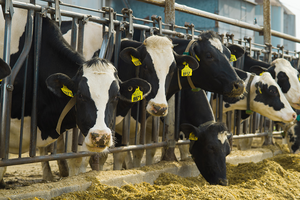The U.S. dairy industry has been collecting herd production data from farmers for over a century through the National Cooperative Dairy Herd Improvement Program (NCDHIP), which records herd production information from farmers nationwide. The Babcock test in 1890 allowed dairy farmers to measure the butterfat composition of milk, and with the collection of herd production data, it became possible to evaluate which bulls sired the highest-producing cows. Over time, advancements in technology, such as artificial insemination and the ability to freeze and ship semen, have increased the number of offspring each bull can produce, expanding the quantity of data available for breeding and genetics research.
The NCDHIP’s cooperative structure ensures benefits for both producers and scientists alike. The program’s model serves as inspiration for other agricultural sectors and illustrates the advantages of data collection for all dairy producers. A new study from the University of Illinois highlights the relevance of the NCDHIP’s century-old history for modern agriculture and digital data collection. The research supports the NCDHIP’s success, “100 years of data sovereignty: Cooperative data governance and innovation in US dairy,” is published in Applied Economic Perspectives and Policy.
The Importance of Data Collection in the U.S. Dairy Industry
For over 100 years, the U.S. dairy industry has been collecting herd production data from farmers across the country. This data collection program, known as the National Cooperative Dairy Herd Improvement Program (NCDHIP), has proven to be an essential resource for cattle breeding and genetics research.
Initially, the program was established in response to the introduction of the Babcock test, which allowed dairy farmers to measure the butterfat composition of milk. With the collection of herd production data, it became possible to evaluate which bulls sired the highest-producing cows, allowing dairy farmers to consult bull evaluation lists published by USDA scientists for breeding decisions.
Over time, advancements in technology, such as artificial insemination and the ability to freeze and ship semen, have increased the number of offspring each bull can produce, expanding the quantity of data available for breeding and genetics research.
The NCDHIP’s cooperative structure ensures benefits for both producers and scientists alike. The program’s model serves as inspiration for other agricultural sectors and illustrates the advantages of data collection for all dairy producers.
A new study from the University of Illinois highlights the relevance of the NCDHIP’s century-old history for modern agriculture and digital data collection. The study’s lead author, Jared Hutchins, assistant professor in the Department of Agricultural and Consumer Economics at the University of Illinois, believes that the program’s success can be attributed to its ability to translate the benefits of data collection for all dairy producers.
Overall, the NCDHIP’s data collection program has proven to be an indispensable resource for the U.S. dairy industry. By providing crucial input for cattle breeding and genetics research, the program has contributed to the industry’s continued success for over a century.
The National Cooperative Dairy Herd Improvement Program: A Model for Successful Data Collection in Agriculture
The National Cooperative Dairy Herd Improvement Program (NCDHIP) is a comprehensive data collection program that has been recording herd production information from farmers nationwide for over a century. The NCDHIP operates through local Dairy Herd Improvement Associations (DHIAs) and has its roots in the first DHIA established in 1905 by Helmer Rabild, a Danish immigrant who worked for the Michigan Department of Agriculture. The program has since expanded, and the number of participating farmers has increased rapidly.
According to Jared Hutchins, assistant professor in the Department of Agricultural and Consumer Economics at the University of Illinois, the NCDHIP is successful because of three key aspects. The first is the private benefits that producers receive by being a part of the program, including a benchmarking report. The second is data interoperability, which means that the program employs universal data standards that allow data across platforms to work with each other. The third is the cooperative data governance model that gives producers control over how their data are used and processed.
The cooperative structure of the NCDHIP ensures that benefits are distributed across the sector. This structure also solves the problem of misalignment of interests between data producers and those who hold and use the data. The NCDHIP has solved this problem cleverly by employing a collaborative agreement between cooperatives, farmers, and the USDA. Hutchins believes that these three aspects are unique to the dairy sector and are crucial for the program’s success.
The NCDHIP’s success has proven to be an indispensable resource for the U.S. dairy industry, providing crucial input for cattle breeding and genetics research. The program’s success is a model for other agricultural sectors, illustrating the advantages of data collection for all producers. The NCDHIP’s data collection program ensures that producers and scientists benefit equally, contributing to the industry’s continued success for over a century.
The dairy sector’s ability to leverage their data revolution in a way that benefits all dairy farmers is a testament to the sector’s success. The dairy industry has proven to be able to adapt to the digital revolution in agriculture and provide a framework for the collection of data that can be used to benefit all agricultural sectors.
The research supporting the NCDHIP’s success, “100 years of data sovereignty: Cooperative data governance and innovation in US dairy,” is published in Applied Economic Perspectives and Policy. The study’s authors are Jared Hutchins and Brent Hueth. The U.S. Department of Agriculture, Economic Research Service supported this research.
Don’t miss interesting posts on Famousbio

